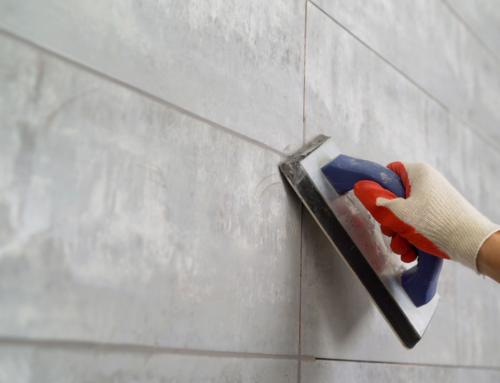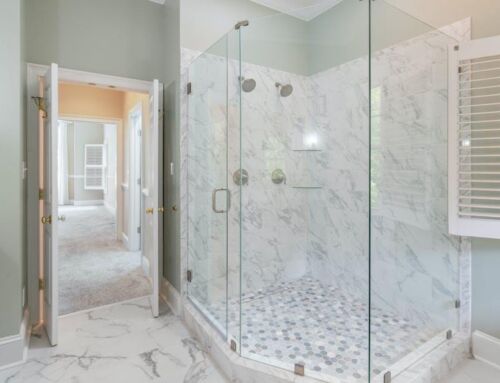Your shower uses grout or caulk, and likely both if it is a tile shower. So what is the difference and why are they used in different places?
The really simple difference is this, grout goes in a line and is non adhesive. Caulk spans from tile to tile (or bathtub to tile) and is adhesive. Grout works best in flat lines between tiles and can sometimes work in 90 degree angles if the line is wide and consistent. If the line is too narrow, uneven, or has a lot of flex, caulk works better.
Grout comes in multiple varieties, but it is always a rigid cement, resin, or epoxy based bonding agent that fills the space between tiles on a flat plane (i.e. a floor or a wall). Most shower installations use cement based grout, while epoxy grouts are less common. Cement based grout is porous and using an impregnating sealer will protect and preserve the grout through its lifetime. Grout should be hard to the touch, with no bend or flex. Properly installed grout is very hard to remove without specialized tools.
Caulk is made for 90 degree angles. For showers the most commonly used caulk is 100% silicone or sanded tile caulk. Both types are significantly more dynamic than grout and are fully waterproof. Because of this, it is superior to grout in intersections, especially when one of the edges is not tile, such as a bathtub. In certain cases, subtle movement of a structure can cause grout to crack and fail despite proper installation and it needs to be replaced with caulk. Caulk is typically used where different planes meet: at shower walls and floor intersections, bathtub tile intersections, and where the shower glass meets the tile. Caulk should have some elasticity and should indent slightly when touched.





